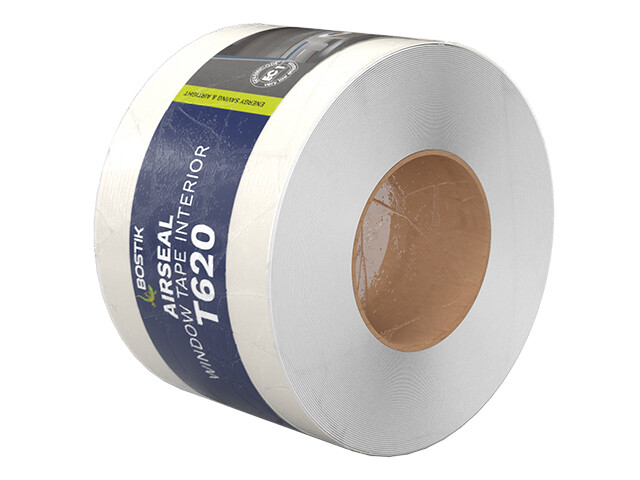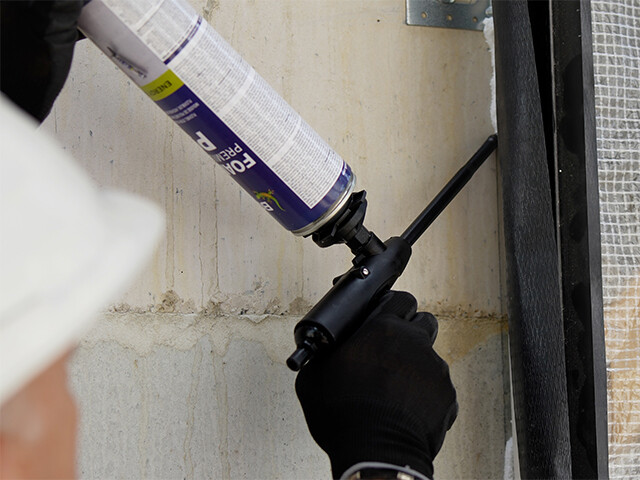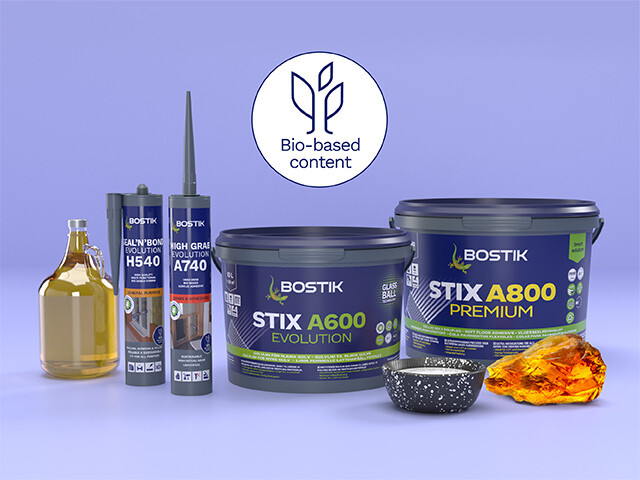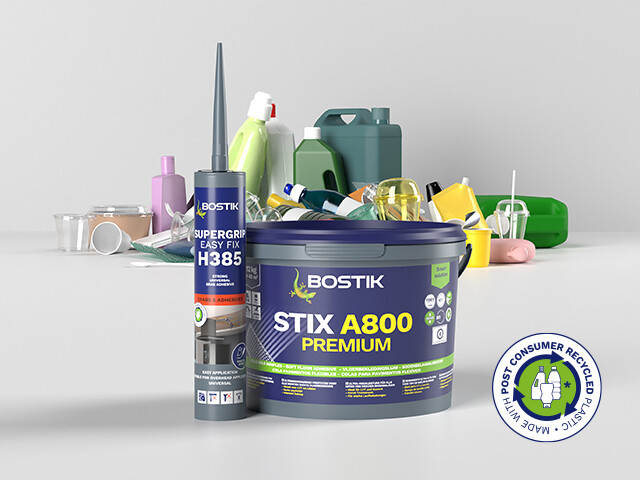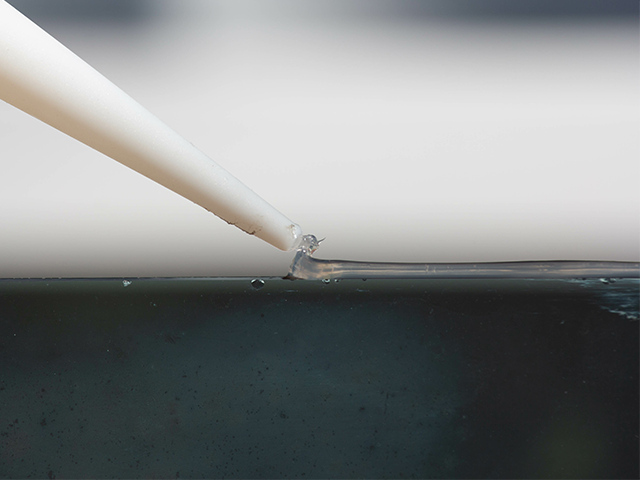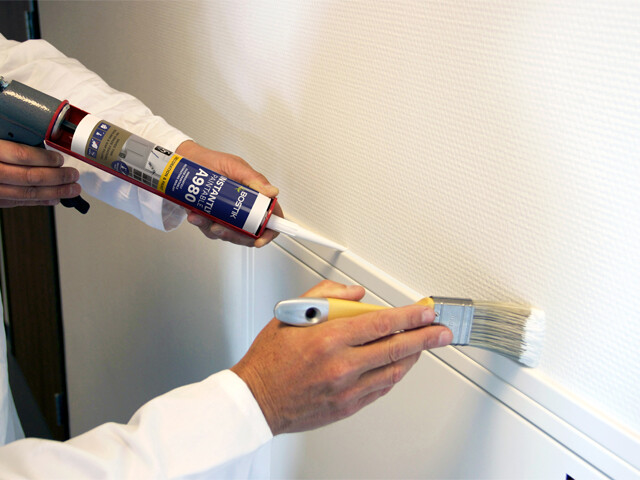Install Bostik's Airseal system products to achieve airtightness around window frames and achieve the first line of defence against heat loss in your home
What can I put into the gaps and joints around window frames to keep the cold out?
Why a window frame? Because this is often a weak point in the insulation of a house.
Before we answer this specific question, first some basic principles about insulation and airtightness.
A well-designed house will have sufficient insulation on all faces (roof, walls, and floor slab), and it will be designed to prevent heat from escaping. There will be a lining to prevent water from getting in. Insulating materials and air gaps (e.g. double-glazed windows) will reduce the amount of heat that can escape.
Insulation keeps things warm in winter and cool in the summer.
We all know the consequences of poor insulation. Your house will feel too cold in the winter and too warm in the summer. And then comes the electricity bill.
The problem of poor insulation becomes personal when it begins to affect your bank account!
Airtightness is the first line of defence. A good heating system will create a warm, healthy environment inside your home. The last thing you want to do with that warm air is lose it through weak points in your insulation system.
That’s where the window question comes from. Yes, you can close your windows. But if there are gaps around the edges, your home will still leak heat.
Can I insulate the gaps and joints around the frames of my double-glazed windows?
Yes, you can.
Enter the Bostik Airseal system, a concept that provides products on three levels of airtight construction: airtightness, thermal insulation, and driving rain tightness.
All three types of protection are equally important. The first concept, starting from the inside, is Airtightness.
You cannot leave your windows open constantly during the winter, because your heater will be working overtime to maintain a comfortable temperature. Similarly, if it’s a hot summer and you’ve got the air conditioning on, you’ll need to close the windows.
But if you have leaky window frames, shutting the windows won’t solve the whole problem. Heat will always look for a path to somewhere cooler. And wind on a winter’s day will find gaps to force cold air into your house.
If there’s a gap through which air can leak, it will find it, and it will take heat with it.
What is the best way to insulate window frames?
Bostik’s Airseal range provides you with a range of products that focus on sealing the joints around windows. This system is made to eliminate those weak points in the airtightness of your building. The products consist of 7 tapes, a coating, and flexible PU foam.
This article will focus on four key components of this system:
BOSTIK T660 AIRSEAL WINDOW TAPE
Is a modified polyamide film/nonwoven material combination. The full-surface self-adhesive underside enables easy, full-coverage installation of the flashing tape for plastering or painting over. Bostik T660 Airseal Window Tape Duo is moisture-variable and can therefore be used both inside and outside. It is airtight, and it resists driving rain, so it can be used to prevent the penetration of moisture from the outside.
BOSTIK T665 AIRSEAL WINDOW TAPE DUO PLUS
This is the same product as T660 but with the addition of an adhesive strip on the opposite side to allow other products to be easily fixed to it.
BOSTIK P605 AIRSEAL FLEX FOAM
Our one-component professional extremely flexible thermal- and sound-insulating polyurethane gun foam. It is the most airtight foam available on the market.
BOSTIK H670 AIRSEAL COATING
Is a high-quality durable elastic sprayable and brushable airtight coating for seamlessly sealing joints and gaps between various substrates.
How to seal window frames?
BOSTIK T660 AIRSEAL WINDOW TAPE DUO & BOSTIK T665 Airseal WINDOW TAPE DUO PLUS
Step 1: Prepare the surface
The surfaces onto which the tape is to be applied must be free from oil, grease, and dust.
Note that low temperatures can lower adhesion. Test beforehand to check that the adhesion will be adequate.
The base must be sufficiently load-bearing. Highly porous or cold or humid surfaces may have to be pre-treated with a suitable primer to enhance adhesion.
BOSTIK T660 Airseal Window Tape Duo can be installed down to -10 degrees Celsius. However, at such temperature, make sure there is no moisture, ice, or hoar frost on the surface onto which the tape is to be installed.
Please note: the additional adhesive strip of the BOSTIK T665 Airseal Window Tape Duo Plus can be applied at temperatures only as low as +5 degrees Celsius.
At low temperatures, the time during which the bond cannot be loaded will increase. We recommend that you perform pre-tests to ensure adequate adhesion. We also recommend you preheat the tape to +15 to +25 degrees Celsius before applying it.
Step 2: Apply the tape
This is a summary only. Please refer to and carefully follow the installation instructions provided with the product.
Cut the Bostik T660 Airseal Window Tape Duo (or T665 Duo Plus) to the required length, allowing about 5 cm extra. Pull off the cover film and carefully install the mounting strip to the back of the window, applying some pressure.
Repeat this procedure on all sides of the window requiring sealing, for both the indoor and outdoor seal. Before you apply the indoor seal, the space between the window and the wall can be filled with Bostik P605 AIRSEAL FLEXFOAM insulating material using a foam-dosing gun. (See the next section.)
Put the window into position and fasten it. Then remove the remaining film cover, attach the tape, and press it fully onto the window surrounds. Overlap the tape joints.
BOSTIK P605 AIRSEAL FLEXFOAM
Step 1: Getting ready for application
The temperature of both the environment and the substrates must be within the range of -15 to +35 degrees Celsius. However, we recommend a range of +15 to +25 degrees Celsius.
The temperature of the canister must be within the range of +5 to +30 degrees Celsius. However, we recommend a range of +15 to +25 degrees Celsius.
Before using it, shake the canister vigorously – at least 20 times.
Step 2: Applying the foam
Hold the canister with the valve turned upwards and affix the adaptor on the tread. We recommend a universal PU foam gun.
Turn the canister upside down and apply the foam. To regulate the flow of the foam, loosen the valve at the back of the handle. Fill the cavity to 70% of its volume. In a low-humidity environment, lightly spray the foam with water. The foam will expand to fill the rest.
Joints wider or deeper than 4 cm should be filled in multiple layers, waiting 15 to 30 minutes between applications and lightly spraying the foam with water after each application.
Use spacers and wedges to hold the frame in place for about 24 hours, until the foam has fully cured.
Once it has cured, BOSTIK P605 AIRSEAL FLEX FOAM can be sealed or plastered over.
Limitations
- Not suitable for continuous exposure to water.
- Not suitable for polyethylene, polypropylene, polycarbonate, polymethyl methacrylate (Perspex, Plexiglas, acrylic), Teflon, soft plastics, neoprene, or bituminous substrates.
- Apply to exterior surfaces only in good, dry weather where it will be able to stay dry for at least 5 hours after application.
BOSTIK H670 AIRSEAL COATING
Step 1: Getting ready for application
The temperature range for application (environment and substrates) is +5 to +40 degrees Celsius
All substrates must be solid, clean, and free of grease and dust. Clean substrates with Bostik Cleaner.
BOSTIK H670 AIRSEAL COATING adheres perfectly without the use of primer to most non-porous substrates. Apply Primer Universal to porous substrates. Always test adhesion before application.
Step 2A: Applying using a pneumatic caulking gun
Cut the nozzle as wide as possible, and apply the sealant without creating bubbles. The thickness of the layer should be at least 4mm.
When smoothing the joint, use a brush combined with (mixed) Finisher.
Step 2B: Applying using a universal spray gun
- Use a type Universal Spray Gun.
- Open the cartridge. Place the white nozzle on the cartridge and fix it to the gun. Place the black nozzle over the white nozzle.
- Place the cartridge with both nozzles in the spray gun. Use the black closing ring to affix the cartridge and to close the gun so it is airtight.
- Set the air pressure of the gun (red button) to between 2.0 and 2.5 bar.
- Set the air pressure in the gun (blue button) between 4.0 and 5.0 bar.
- Use Finisher to smooth the joint.
Joints larger than 5mm must be completed with a backer rod.
Step 3: Painting
BOSTIK H670 AIRSEAL COATING is paintable with water-based and most two-component paints. Synthetic paints can dry more slowly. Test compatibility with paint before application. For the best results, paint within 8 hours after application.
Limitations
- Not suitable for polyethylene, polypropylene, polycarbonate, polymethyl methacrylate (acrylic, Plexiglas, Perspex), Teflon, soft plastics, neoprene and bituminous substrates.
- Not suitable for glazing joints or natural stone.
Airtightness. The first step for a healthy, warm, energy-efficient home.
The Airseal System gives you airtightness, thermal insulation, and driving rain tightness. And energy savings.
BOSTIK's Airseal system ensures that your windows will not be a weak point in your home’s insulation system.
These airtightness products are clean and easy to use. They are flexible and will improve your home’s airtightness and thermal insulation properties. They will also improve sound insulation.
Sealing tape applied to the exterior will protect your home from water ingress. It will also act as a one-way vapour barrier that lets moisture out.
All these things add up to improved home health and comfort and, importantly, energy savings.
BOSTIK AIRSEAL. Airtightness. Thermal Insulation. Driving rain tightness.
Sign up for technical training
Bostik ACADEMY is a knowledge center carefully created for professionals in the construction market. At the ACADEMY you can sign up for a tailored training program, matched to your needs and skills.
Our experienced Technical Team will present our product portfolio, best application methods, and key industry recommendations. Sign up through the link below to learn more.




